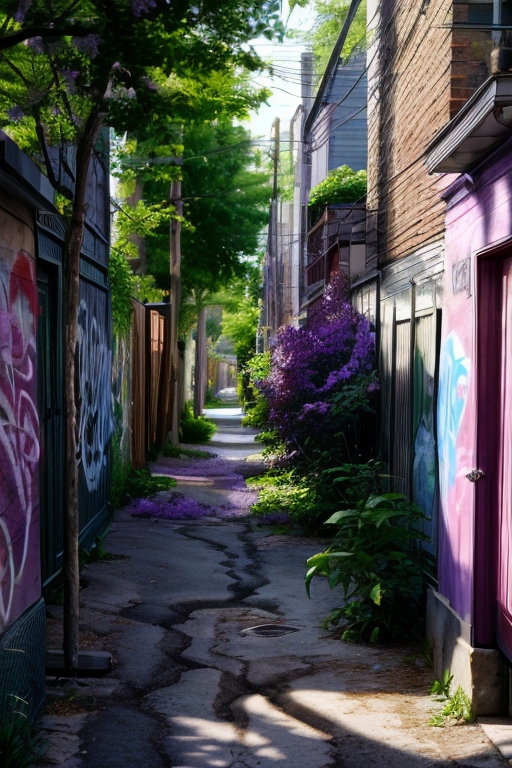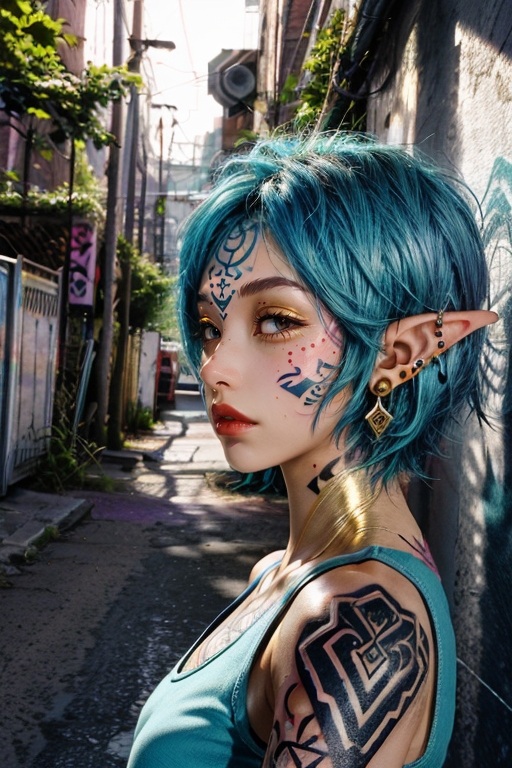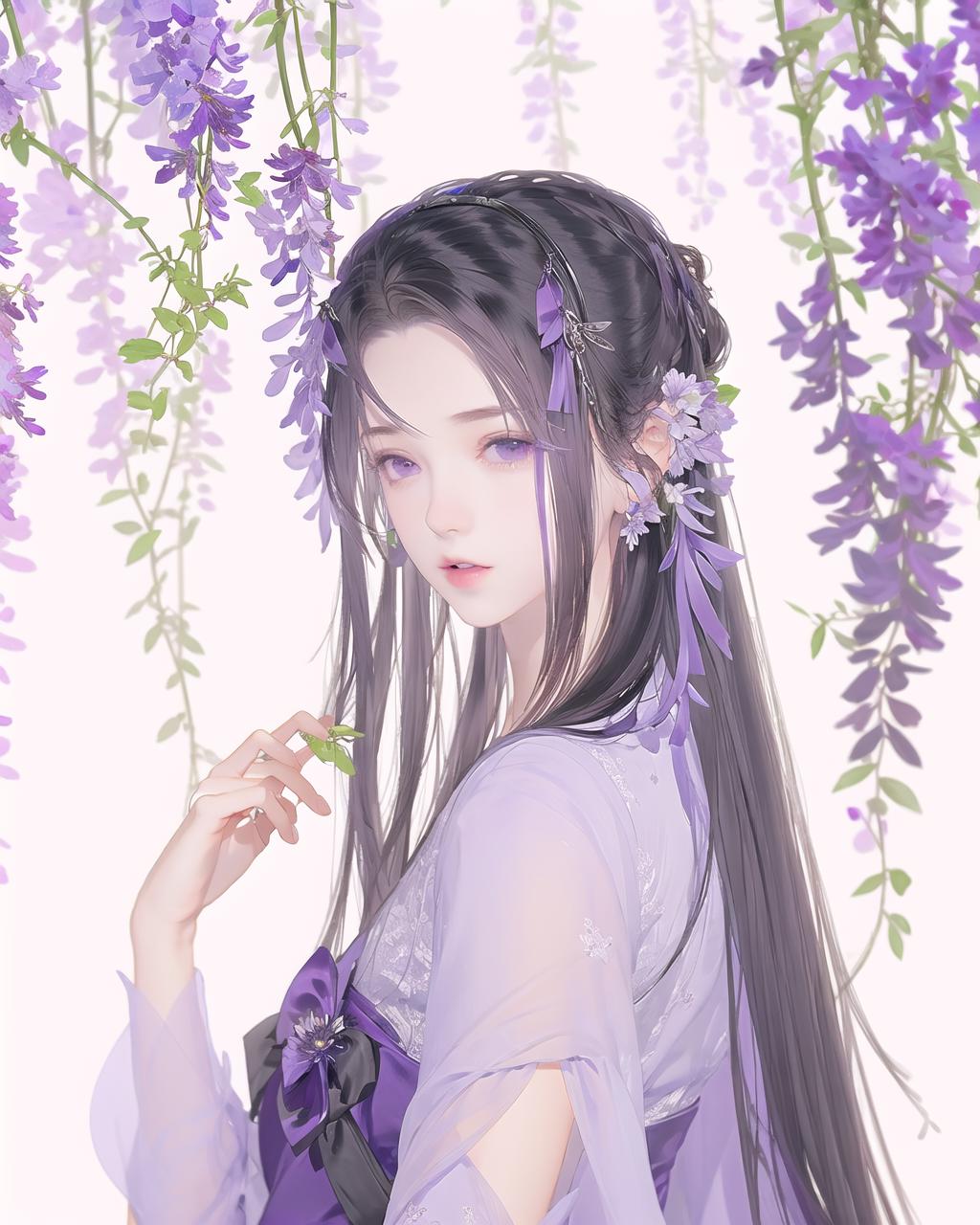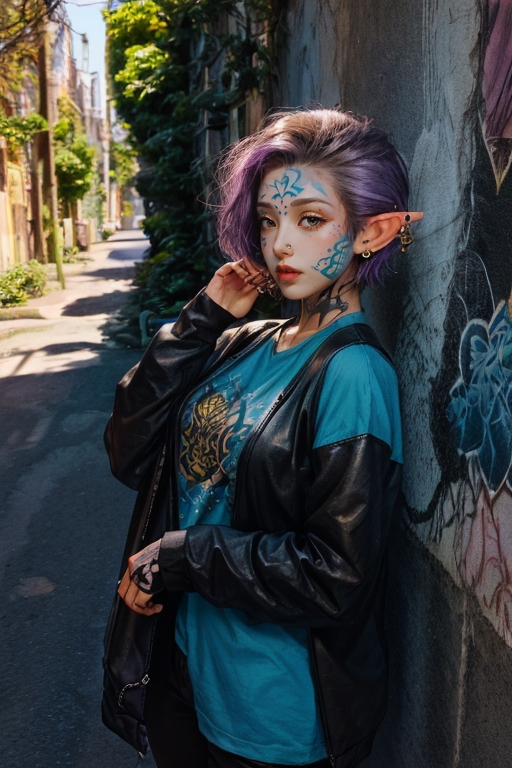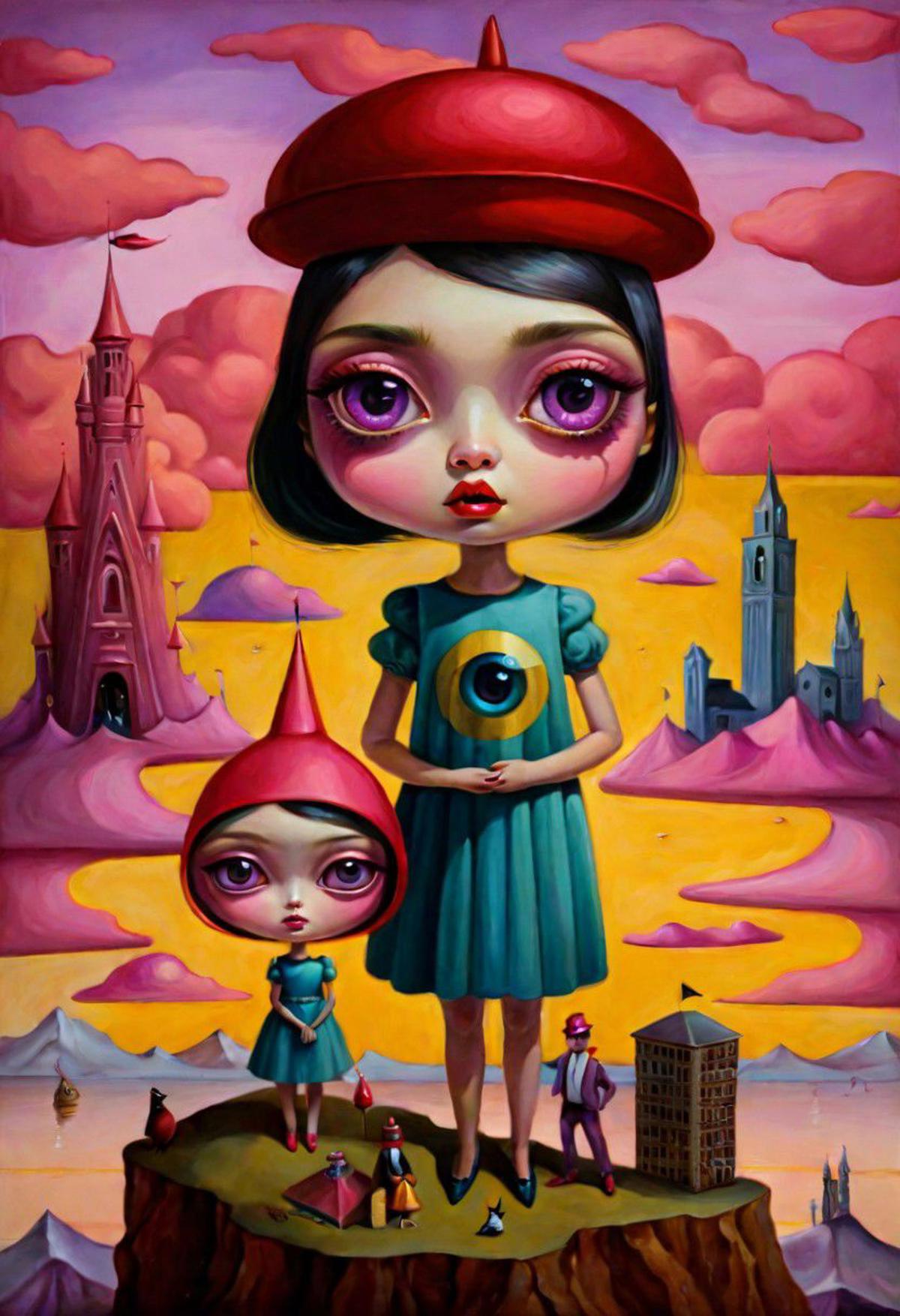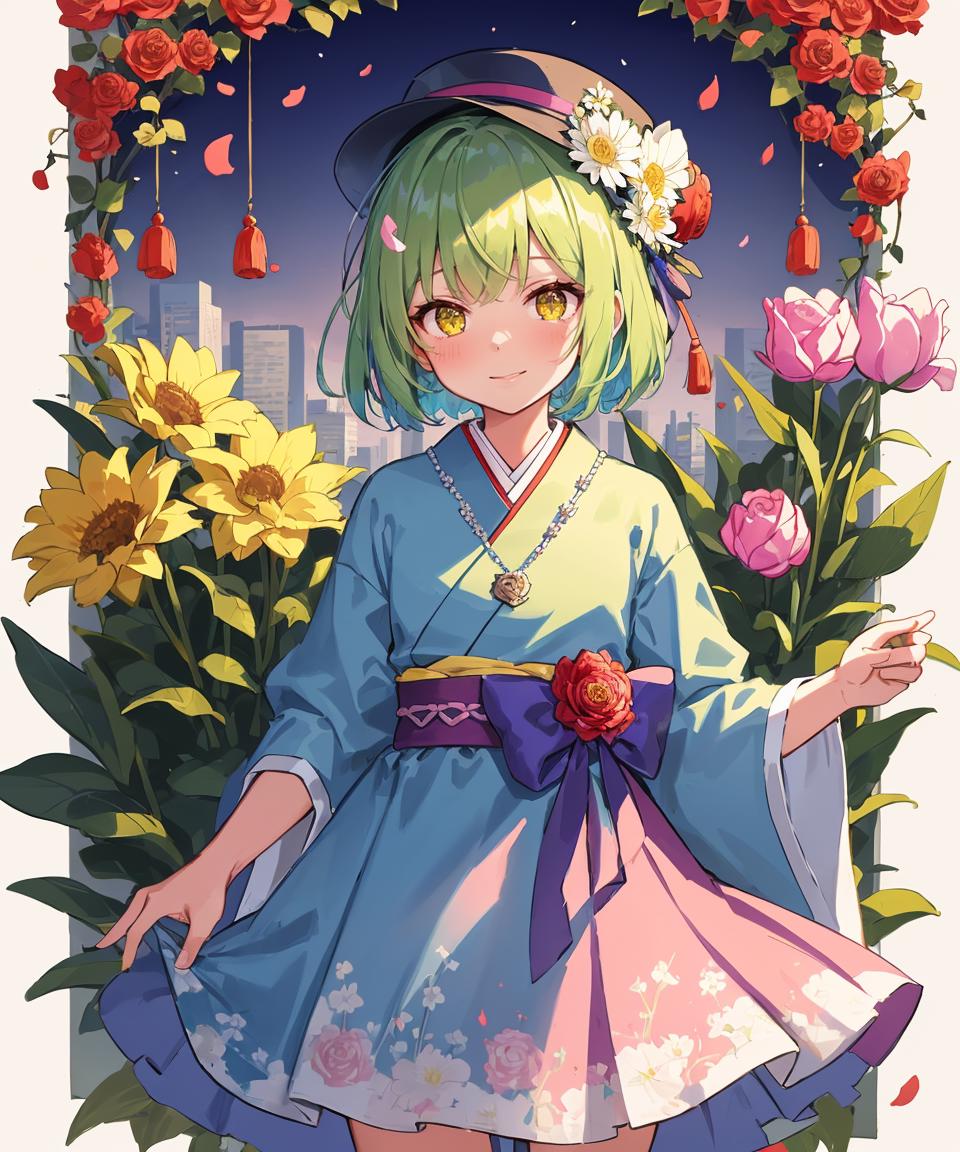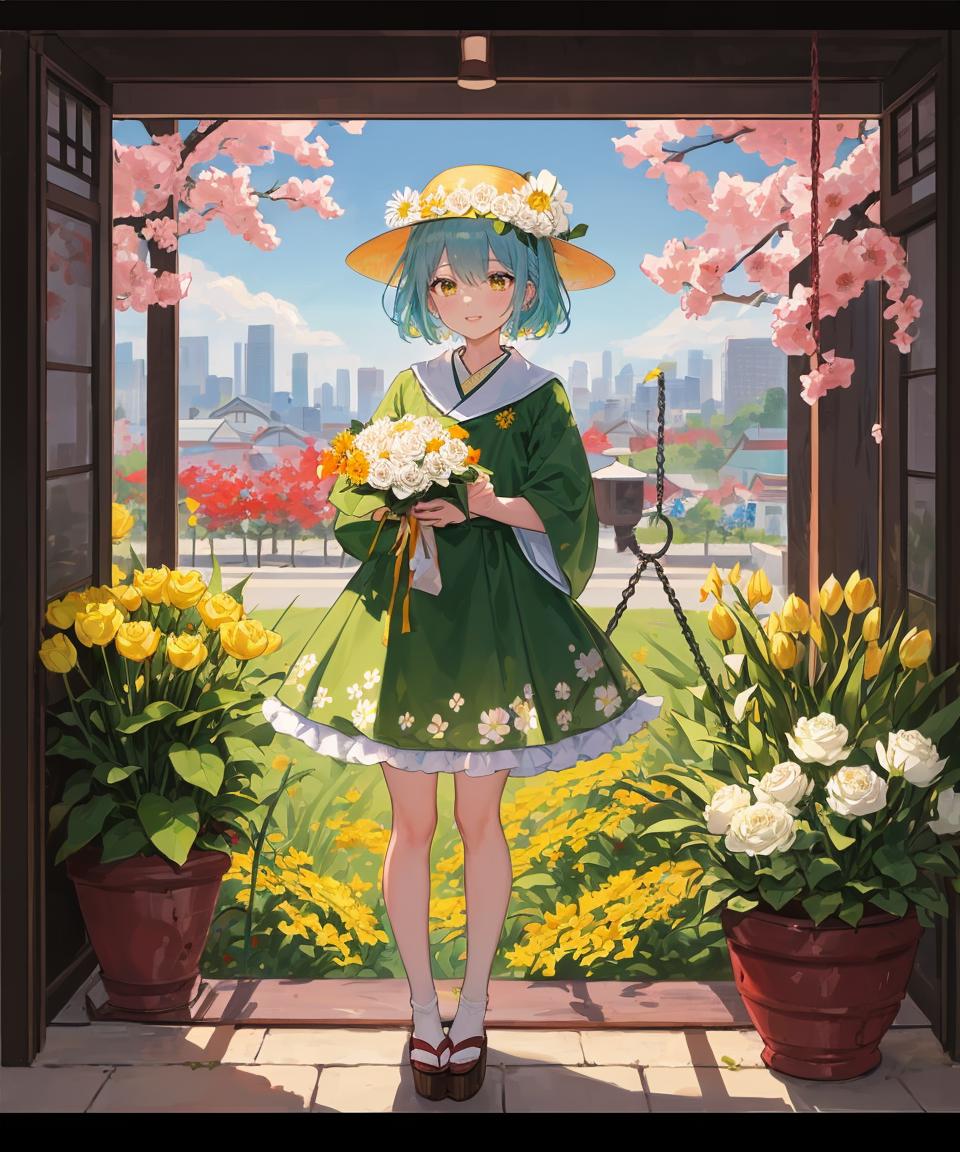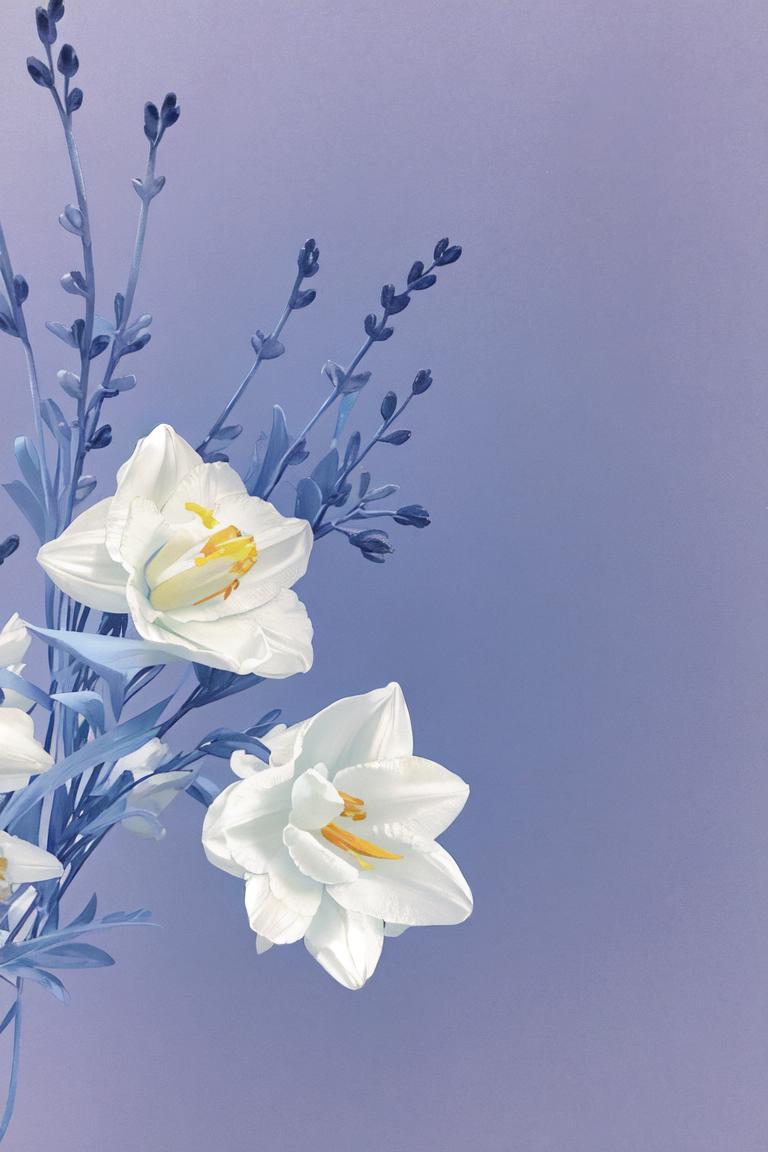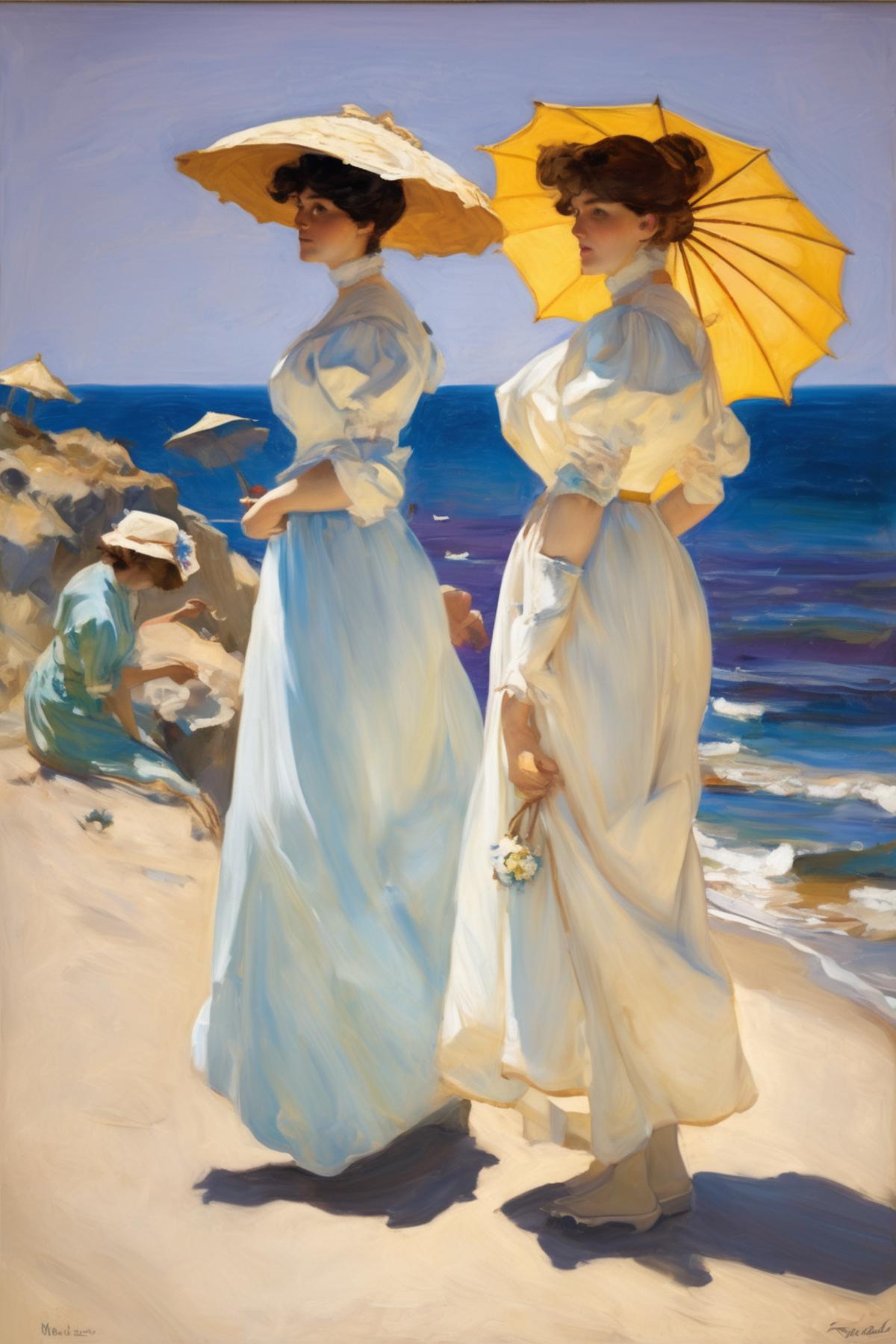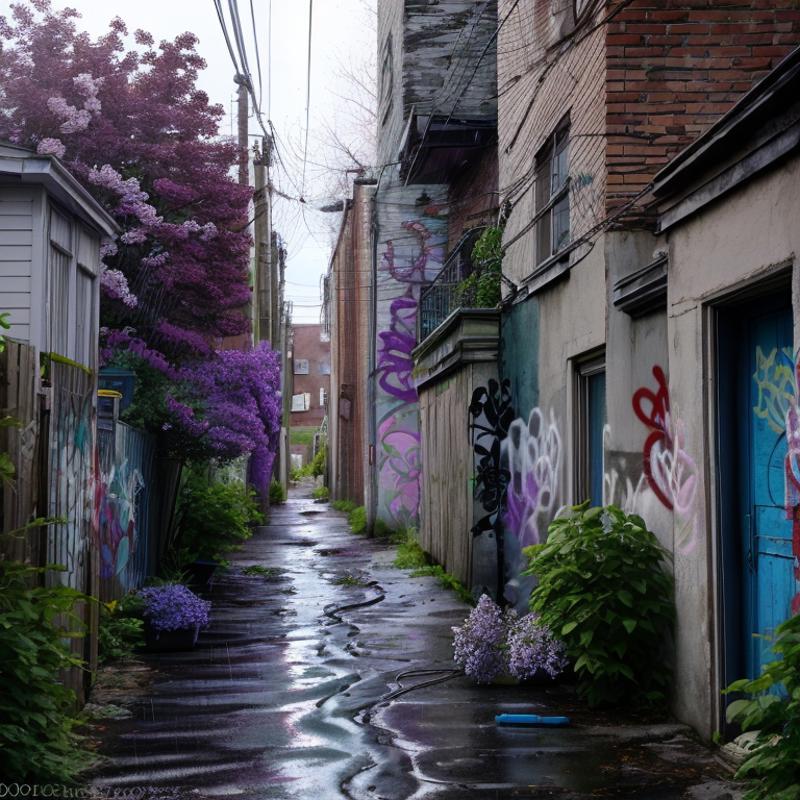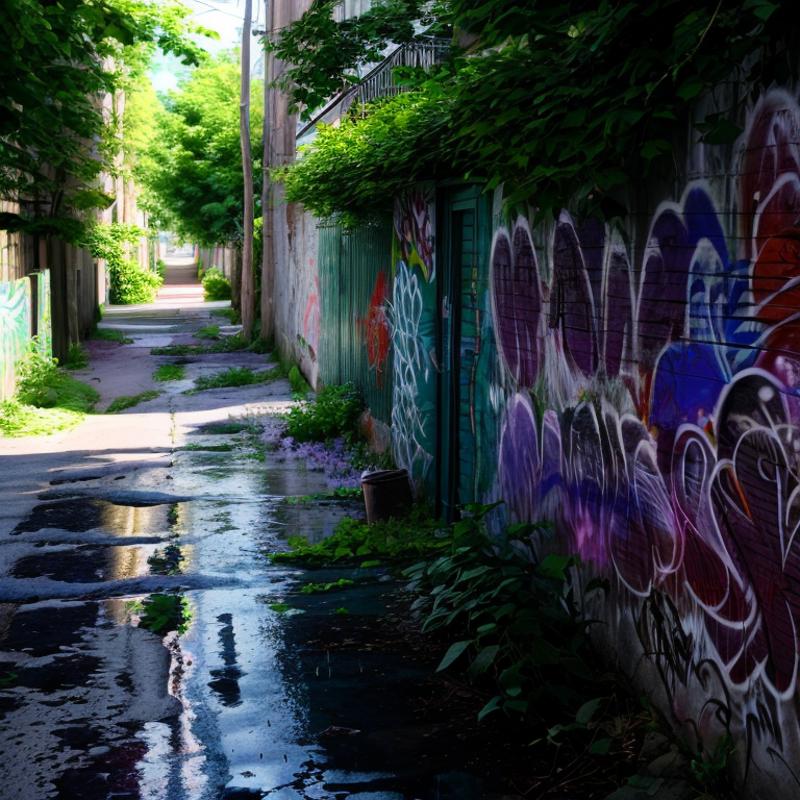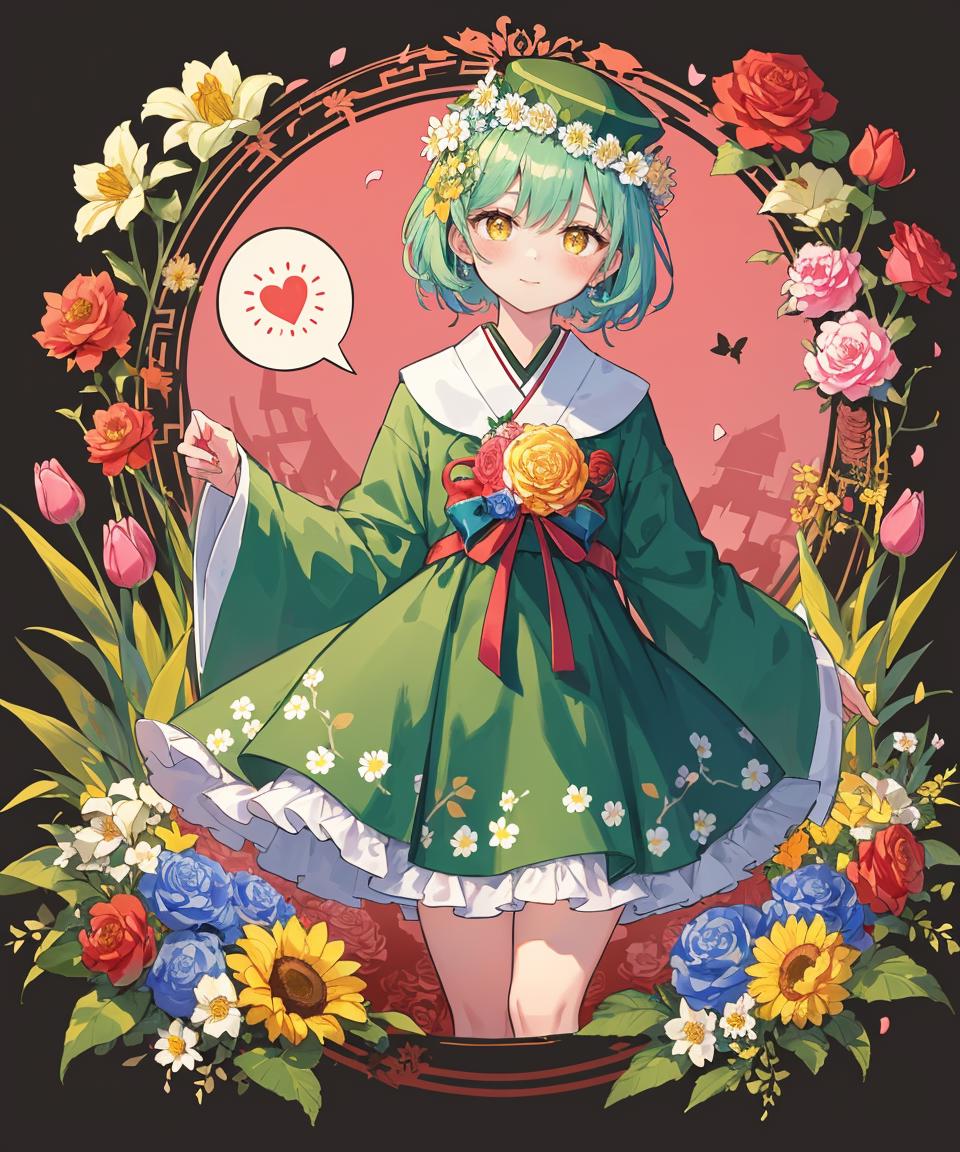Lilac images generated with AI
Bettany Hughes
Markie Post
Danielle Fishel
more_details
LowRA
dreamshaper_7
Irrational_Photography
Montreal Alleys // Ruelles de Montréal
trees
lilac
lora:montreal_alleys
lora:more_details:0.4
lora:LowRA:0.4
alley
graffiti
golden hour
directional light
kamikazey
Lowbrow Art Style SDXL
Gouache painting
cute
wearing social fashion dress
deep large eyes
ochre
pink skin
city background. of a lowbrow art style
surreal summerscape sunset
with Pepita a red dada and a dede hat
holding a large dada that shields fairytale landscape
micro-details
fantasy
multicolor
multilayer
More surrealism and madness.much more surrealism and crazy designs. With gold and cardinal red surreal dada clouds more surrealism and bizarre designs with bright vibrant colours.
keke
epiNoiseoffset_v3
add_detail
montreal_alleys
masterpiece
best quality
lora:keke:1 lora:epiNoiseoffset_v3:1 lora:add_detail:0 lora:GoodHands-vanilla:1
symbol-shaped pupils
colorful
flat color
1girl
solo
looking at viewer
facing viewer
full body
landscape
casual
lora:montreal_alleys:1
SDXL Base 1.0
Kappa_Neuro
John Singer Sargent Style
John Singer Sargent Style - a 1909 impressionist painting in the style of Joaquin Sorolla
The women depicted in life-size are Sorolla's wife
Clotilde
and his eldest daughter
Maria. The painting was created at Playa de El Cabanyal beach in Sorolla's hometown of Valencia. Both women lean slightly forward
Show More
montreal_alleys
more_details
LowRA
epi_noiseoffset2
majicmixSombre_v20
Irrational_Photography
Montreal Alleys // Ruelles de Montréal
trees
lilac
alley
graffiti
golden hour
electrical wires
elf
teal hair
short hair
shaved hair
punk girl
tribal tattoos
nose and ear piercings
strong shadows:0.8
directional lighting
lora:montreal_alleys:0.9
lora:more_details:0.5
lora:LowRA:0.4
lora:epi_noiseoffset2:0.5
montreal_alleys
more_details
LowRA
epi_noiseoffset2
majicmixSombre_v20
Irrational_Photography
Montreal Alleys // Ruelles de Montréal
portrait
hips up
hand in hair
trees
lilac
alley
graffiti
golden hour
electrical wires
elf
teal hair
short hair
shaved hair
punk girl
tribal tattoos
nose and ear piercings
strong shadows:0.8
directional lighting
lora:montreal_alleys:0.9
lora:more_details:0.4
lora:LowRA:0.4
lora:epi_noiseoffset2:0.5
lora:ClothingAdjuster2:-0.95
brown leather clothing
Markie Post
treecatt
Markie Post
MarkiePost_V2
DETAIL_SLIDER_BY_STABLE_YOGI
more_details
cyberrealistic_v40
Full length photo:1.6 of lora:MarkiePost_V2:0.5 Mark1eP0st
smiling
Arms above head pose in garden
black
crimson
champagne pencil skirt:1.6
lilac
emerald green
sunflower yellow Tie-neck blouse
knee-length pencil skirt:1.6
long pencil skirt
sheer black pantyhose:1.3
stiletto boots:1.6
very skinny legs:1.8
very skinny arms:1.8
lora:skin_slider_v2_1_FACE:-0.5
lora:DETAIL_SLIDER_BY_STABLE_YOGI:0.25
lora:more_details:0.25
earrings
full length photo:1.5
8k
best quality
ultra high res:1.2
absurdres
intricate
photorealistic
masterpiece
ultra-detailed:1.3
remarkable color
ultra realistic
textured skin
remarkable detailed pupils
realistic dull skin noise
visible skin detail
skin fuzz
dry skin
full length photo:1.6
shot from in front on Lumix GH5
vibrant colors
bright natural lighting
bright side lighting
bright front lighting
Markie Post
treecatt
Markie Post
MarkiePost_V2
smooth_pantyhose
DETAIL_SLIDER_BY_STABLE_YOGI
more_details
cyberrealistic_v40
Full length photo:1.6 of lora:MarkiePost_V2:0.5 Mark1eP0st
smiling
One hand on hip pose in courtroom
royal blue
lilac
light blue pencil skirt:1.6
magenta
pastel pink Ruffle top
knee-length pencil skirt:1.6
long pencil skirt
lora:smooth_pantyhose:0.7 hwextsmoblapan
stiletto heels:1.6
very skinny legs:1.8
very skinny arms:1.8
lora:skin_slider_v2_1_FACE:-0.5
lora:DETAIL_SLIDER_BY_STABLE_YOGI:0.25
lora:more_details:0.25
earrings
full length photo:1.5
8k
best quality
ultra high res:1.2
absurdres
intricate
photorealistic
masterpiece
ultra-detailed:1.3
remarkable color
ultra realistic
textured skin
remarkable detailed pupils
realistic dull skin noise
visible skin detail
skin fuzz
dry skin
full length photo:1.6
shot from the side on Lumix GH5
vibrant colors
bright natural lighting
bright side lighting
bright front lighting
kamikazey
Lowbrow Art Style SDXL
Gouache painting
cute
wearing social fashion dress
deep large eyes
ochre
lilac
pink skin
city background. of a lowbrow art style
surreal summerscape sunset
with Pepita a red dada and a dede hat
holding a large dada that shields fairytale landscape
micro-details
fantasy
multicolor
multilayer
More surrealism and madness.much more surrealism and crazy designs. With gold and cardinal red surreal dada clouds more surrealism and bizarre designs with bright vibrant colours.
add_detail
LowRA
Original_dreamshaper_7
DonMischo
Billions of Charaters Extension - magical characters, magical attires, professions, magic types, beings
best quality
masterpiece
realistic
detailed
male Vampire
legendary creature
force
power
blood
undead
beautyful
alluring
night
moon
fangs
fantasy
Late twenties Chiseled
Middle Easterner
Ruby red eyes
Modern slicked-back undercut hair
Anger
Observing patterns in the movements of magical creatures
decoding their behavior
wearing Adamantine
Fey-forged Metal and Bewitching Oracle Draped Skirt
Priest's Vestment
Mystic Sandals
Enthrall Theory of mind
Rotation
Wave propagation
Lilac
Bewildering
Bose-Einstein Condensate
Tetrahedron
steam devil magic:1.3
absurdres
HDR
lora:add_detail:1
lora:LowRA:0.5
7pagNSFWMergedModel_7pag
LotusSnacks
7PAG - NSFW Merged Model
detailed
detailed background
maple leaf
flower ornament
flower in eye
sparkle background
colorful
impressionism
abstract background
flower bed
green background
red rose
day
plum blossoms
spoken flower
watermelon
patriotism
rose background
inset
seasons
daffodil
light green hair
pink background
cityscape
holding flower
ikebana
rose bush
falling petals
green dress
painting \medium\
orange rose
scenery
paper cutout
pink tulip
karakusa \pattern\
strawberry
pink rose
flower swing
honeycomb background
japanese white-eye
tsumami kanzashi
kikumon
chinese bellflower
red carnation
nemophila \flower\
sky print
floral print
red tulip
pink dress
white flower
flower necklace
light blue hair
peony \flower\
one year artist progress record
fine art parody
binetsu kara mystery
flower-shaped hair
hat flower
petals
flower wreath
sakamoto clan \emblem\
tulip
nature
lilac
blue flower
seigaiha
hair flower
chrysanthemum
flower pot
daisy
flower \symbol\
yellow flower
spiral background
glowing butterfly
flower knot
bellflower
mosaic art
Markie Post
treecatt
Markie Post
MarkiePost_V2
smooth_pantyhose
DETAIL_SLIDER_BY_STABLE_YOGI
more_details
cyberrealistic_v40
Full length photo:1.6 of lora:MarkiePost_V2:0.5 Mark1eP0st
smiling
Slight head tilt pose in outside courthouse
cherry red
royal blue
lilac pencil skirt:1.6
lilac
crimson
black Tie-neck blouse
knee-length pencil skirt:1.6
long pencil skirt
lora:smooth_pantyhose:0.7 hwextsmoblapan
stiletto heels:1.6
very skinny legs:1.8
very skinny arms:1.8
lora:skin_slider_v2_1_FACE:-0.5
lora:DETAIL_SLIDER_BY_STABLE_YOGI:0.25
lora:more_details:0.25
earrings
full length photo:1.5
8k
best quality
ultra high res:1.2
absurdres
intricate
photorealistic
masterpiece
ultra-detailed:1.3
remarkable color
ultra realistic
textured skin
remarkable detailed pupils
realistic dull skin noise
visible skin detail
skin fuzz
dry skin
full length photo:1.6
shot from the rear on Lumix GH5
vibrant colors
bright natural lighting
bright side lighting
bright front lighting
Markie Post
treecatt
Markie Post
MarkiePost_V2
DETAIL_SLIDER_BY_STABLE_YOGI
more_details
cyberrealistic_v40
Full length photo:1.6 of lora:MarkiePost_V2:0.5 Mark1eP0st
smiling
lora:breastslider:-2.5
large natural breasts:1.3
cleavage:1.3
hourglass body shape:1.3
Hands lifting breasts pose in garden
light blue
black
lilac pencil skirt:1.6
lilac
cherry red Blouse
knee-length pencil skirt:1.6
long pencil skirt
sheer black pantyhose:1.3
stiletto boots:1.6
very skinny legs:1.8
very skinny arms:1.8
lora:skin_slider_v2_1_FACE:-0.5
lora:DETAIL_SLIDER_BY_STABLE_YOGI:0.25
lora:more_details:0.25
earrings
full length photo:1.5
8k
best quality
ultra high res:1.2
absurdres
intricate
photorealistic
masterpiece
ultra-detailed:1.3
remarkable color
ultra realistic
textured skin
remarkable detailed pupils
realistic dull skin noise
visible skin detail
skin fuzz
dry skin
full length photo:1.6
shot from the rear on Lumix GH5
vibrant colors
bright natural lighting
bright side lighting
bright front lighting
keke
epiNoiseoffset_v3
add_detail
montreal_alleys
Irrational_Photography
Montreal Alleys // Ruelles de Montréal
masterpiece
best quality
lora:keke:1 lora:epiNoiseoffset_v3:1 lora:add_detail:0 lora:GoodHands-vanilla:1
symbol-shaped pupils
colorful
flat color
1girl
solo
looking at viewer
facing viewer
full body
landscape
casual
lora:montreal_alleys:1
trees
lilac
graffiti
alley
7pagNSFWMergedModel_7pag
LotusSnacks
7PAG - NSFW Merged Model
detailed
detailed background
maple leaf
flower ornament
flower in eye
sparkle background
colorful
impressionism
abstract background
flower bed
green background
red rose
day
plum blossoms
spoken flower
watermelon
patriotism
rose background
inset
seasons
daffodil
light green hair
pink background
cityscape
holding flower
ikebana
rose bush
falling petals
green dress
painting \medium\
orange rose
scenery
paper cutout
pink tulip
karakusa \pattern\
strawberry
pink rose
flower swing
honeycomb background
japanese white-eye
tsumami kanzashi
kikumon
chinese bellflower
red carnation
nemophila \flower\
sky print
floral print
red tulip
pink dress
white flower
flower necklace
light blue hair
peony \flower\
one year artist progress record
fine art parody
binetsu kara mystery
flower-shaped hair
hat flower
petals
flower wreath
sakamoto clan \emblem\
tulip
nature
lilac
blue flower
seigaiha
hair flower
chrysanthemum
flower pot
daisy
flower \symbol\
yellow flower
spiral background
glowing butterfly
flower knot
bellflower
mosaic art
Danielle Fishel
civitaicomv8ptt846
Danielle Fishel
hourglassv01
smile_controller_V1
hair_length_slider_v1
DETAIL_SLIDER_BY_STABLE_YOGI
cyberrealistic_v40
teenage daniellefishel
dfishel
lora:hourglassv01:0.7 hourglass body shape
short body
petite body
sunflower yellow
lilac
royal blue Button-up shirt
light blue
pastel pink
crimson Maxi skirt
smiling
looking at viewer
Sitting on edge pose
in her living room
lora:smile_controller_V1:0.25 smile
lora:breastsizeslider:-1.75
large natural breasts:1.3
lora:hair_length_slider_v1:1.5
long brown hair with blond highlights:1.3
thick flowing hair
wide curving hips:1.6
hour glass body:1.6
very narrow waist:1.6
very skinny arms:1.6
very skinny legs:1.6
stiletto heels:1.3
jewelry
necklace
earrings
bracelets
lora:skin_slider_v2_1_FACE:-0.5
lora:DETAIL_SLIDER_BY_STABLE_YOGI:0.25
8k
best quality
ultra high res:1.2
absurdres
intricate
photorealistic
masterpiece
ultra-detailed:1.3
remarkable color
ultra realistic
textured skin
remarkable detailed pupils
realistic dull skin noise
visible skin detail
skin fuzz
dry skin
full length:1.6 photo shot at eye level from the rear on Lumix GH5
vibrant colors
bright natural lighting
bright side lighting
bright front lighting
SDXL Base 1.0
Kappa_Neuro
John Singer Sargent Style
John Singer Sargent Style - a 1909 impressionist painting in the style of Joaquin Sorolla
The women depicted in life-size are Sorolla's wife
Clotilde
and his eldest daughter
Maria. The painting was created at Playa de El Cabanyal beach in Sorolla's hometown of Valencia. Both women lean slightly forward
giving the impression of movement towards the right edge. Clotilde is standing straight
while Maria has turned her head slightly to the right and is looking towards the viewer. Both mother and daughter are wearing long white sundresses with elegant presentation
including a straw hat and parasol for Clotilde. Maria's dress emphasizes her slender silhouette with a stand-up collar and transparent white cloth sleeves. Clotilde's dress has cropped sleeves and is accented with a white belt. The sea wind creates arabesques behind Maria's dress. Maria holds a yellow straw hat with a wide brim
decorated with purple flowers and a turquoise bow. Clotilde holds an open white parasol angled to the ground on the left side. Both women wear elegant white women's shoes with small heels. The painting features an ocher expanse of sand in the foreground
with the women standing a few meters from the sea. The sand is depicted in short strokes
and there is a seamless transition from the beach to the sea. The viewer's perspective is slightly raised
with no visible horizon. The beach and the sea form a background
with a wave of white foam at the top of the screen. The sea shimmers in different shades of blue
which Sorolla applied in elongated brushstrokes. The dominant color of the image is the white of the dress and parasol
mixed with blue
yellow
lilac
and orange shades. The lighting in the painting is characteristic of early evening on a summer day in the Mediterranean
with the sun appearing from the direction of the viewer
casting long shadows behind the women. The painting is representative of Luminismo
a form of Neo-Impressionism that originated in Spain resulting from Impressionism.
hairdetailer
add_detail
copax_charm_eu
luminetest
copaxtimeless_copaxMelodies-0431-2982-0444
nochekaiser881
Lumine (蛍) (荧) (熒) - Genshin Impact (原神)
lora:hairdetailer:1 lora:add_detail:0.5 lora:copax_charm_eu:0.2 1girl
3d
photorealistic
masterpiece
best quality
intricate
skin indentation
face smiling
from back view
Twirling with one hand on the hip
in a A misty morning over a farm with crops growing in the fields
pointillism oil painting
Lilac
inspiring
Degas
lumine
blonde hair
flower
hair between eyes
hair flower
hair ornament
short hair
short hair with long locks
sidelocks
yellow eyes:1.5
boots
detached sleeves
dress
thigh boots
white dress
white feathers
white flower
white footwear
lora:luminetest:1
7pagNSFWMergedModel_7pag
LotusSnacks
7PAG - NSFW Merged Model
detailed
detailed background
maple leaf
flower ornament
flower in eye
sparkle background
colorful
impressionism
abstract background
flower bed
green background
red rose
day
plum blossoms
spoken flower
watermelon
patriotism
rose background
inset
seasons
daffodil
light green hair
pink background
cityscape
holding flower
ikebana
rose bush
falling petals
green dress
painting \medium\
orange rose
scenery
paper cutout
pink tulip
karakusa \pattern\
strawberry
pink rose
flower swing
honeycomb background
japanese white-eye
tsumami kanzashi
kikumon
chinese bellflower
red carnation
nemophila \flower\
sky print
floral print
red tulip
pink dress
white flower
flower necklace
light blue hair
peony \flower\
one year artist progress record
fine art parody
binetsu kara mystery
flower-shaped hair
hat flower
petals
flower wreath
sakamoto clan \emblem\
tulip
nature
lilac
blue flower
seigaiha
hair flower
chrysanthemum
flower pot
daisy
flower \symbol\
yellow flower
spiral background
glowing butterfly
flower knot
bellflower
mosaic art
Bettany Hughes
ElizaPottinger
Bettany Hughes - Textual Inversion
theTrualityEngine_trualityENGINEPRO
photo of EPB3tth4nyHugh3s:0.99
closeup portrait
perfect hair
modern photo
Polished Prints: A printed collared shirt in a geometric or abstract design paired with a solid-colored flared skirt. Opt for sleek and modern accessories to enhance the polished look.|baroque Fichu Dresses
Brocade Appliqués
Ruched Tulle
Metallic Threadwork Bodices
Pearl or Gemstone Decorations on Skirts
Baroque Pearl Necklaces
lilac
24mm
analog
cinematic
film grain:1.3
mudroom
coffee table
laptop/computer
cutlery forks
knives
spoons
granite
gas lanterns
jellyfish gene insertion
chandeliers| bus stop
gradient:1.1
detailed eyes
eyeliner
long lashes
epicPhoto
long eyelashes
painted lips
Danielle Fishel
civitaicomv8ptt846
Danielle Fishel
hourglassv01
smile_controller_V1
hair_length_slider_v1
DETAIL_SLIDER_BY_STABLE_YOGI
cyberrealistic_v40
teenage daniellefishel
dfishel
lora:hourglassv01:0.7 hourglass body shape
short body
petite body
sunflower yellow
lilac
pastel pink Silk blouse
emerald green
cobalt blue
light blue Skinny pants
upset
looking at viewer
Hands on hips pose
in her bedroom
lora:smile_controller_V1:0.25 smile
lora:breastsizeslider:-1.75
large natural breasts:1.3
lora:hair_length_slider_v1:1.5
long brown hair with blond highlights:1.3
thick flowing hair
wide curving hips:1.6
hour glass body:1.6
very narrow waist:1.6
very skinny arms:1.6
very skinny legs:1.6
stiletto heels:1.3
jewelry
necklace
earrings
bracelets
lora:skin_slider_v2_1_FACE:-0.5
lora:DETAIL_SLIDER_BY_STABLE_YOGI:0.25
8k
best quality
ultra high res:1.2
absurdres
intricate
photorealistic
masterpiece
ultra-detailed:1.3
remarkable color
ultra realistic
textured skin
remarkable detailed pupils
realistic dull skin noise
visible skin detail
skin fuzz
dry skin
full length:1.6 photo shot at eye level from the side on Lumix GH5
vibrant colors
bright natural lighting
bright side lighting
bright front lighting
Show more
